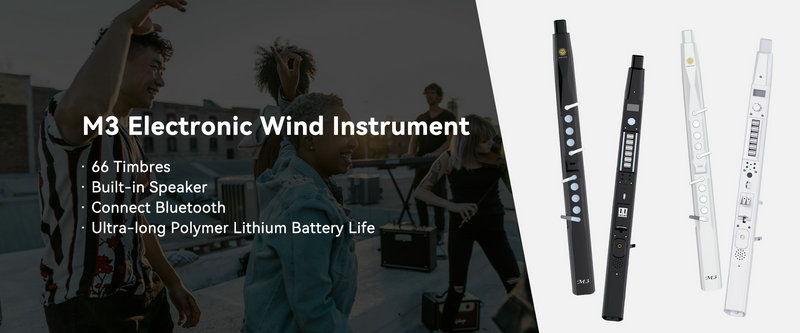Electric Wind Instruments: Do They Need Regular Calibration?
In the realm of musical instruments, the question of whether electric wind instruments need regular calibration is an important one. This topic delves into the unique characteristics of electric wind instruments and how they differ from their traditional acoustic counterparts in terms of maintenance and calibration requirements.
To begin with, let's understand what electric wind instruments are. Electric wind instruments combine elements of traditional wind instruments with advanced electronic technology. They typically consist of a mouthpiece, keys or buttons for fingering, and electronic components that process and amplify the sound. These instruments can produce a wide range of sounds and effects, making them highly versatile and popular among musicians of various genres.
One of the main differences between electric wind instruments and acoustic instruments is the way they produce sound. Acoustic instruments rely on the vibration of air columns or strings to create sound, which can be affected by factors such as temperature, humidity, and physical wear. As a result, acoustic instruments often need regular tuning and maintenance to ensure they stay in tune and function properly.
On the other hand, electric wind instruments generate sound through electronic means. The sound is produced by sensors that detect the player's input and convert it into digital signals. These signals are then processed by the instrument's electronics and amplified to produce the final sound. Since the sound production is based on digital technology, it is generally more stable and less susceptible to changes in environmental conditions.
This stability of digital sound production is one of the reasons why electric wind instruments do not typically need regular calibration in the same way that acoustic instruments do. Calibration, in the context of traditional instruments, often refers to the process of adjusting the pitch or tone of the instrument to ensure it is in tune with other instruments or a specific standard. For example, a piano tuner will adjust the tension of the piano strings to achieve the correct pitch.
In contrast, electric wind instruments are designed to maintain a consistent pitch and tone without the need for frequent adjustments. The digital nature of these instruments allows for precise control over the sound parameters, and most models come with preset settings that can be easily adjusted by the user. Additionally, many electric wind instruments have built-in tuners or pitch detection systems that can help the player ensure they are playing in tune.
However, this does not mean that electric wind instruments are completely maintenance-free. While they may not require regular calibration, there are still some aspects of maintenance that musicians should be aware of. For example, the electronic components of these instruments can be sensitive to damage from moisture, dust, and extreme temperatures. Therefore, it is important to store and handle electric wind instruments properly to protect them from these elements.
Another consideration is the battery life of portable electric wind instruments. Some models run on batteries, and it is essential to keep the batteries charged or replace them when necessary to ensure uninterrupted use. Additionally, musicians should regularly check the connections and cables of their electric wind instruments to ensure they are secure and functioning properly.
In addition to maintenance concerns, there are also some differences in playing technique between electric wind instruments and acoustic instruments. Since electric wind instruments often have a wider range of sounds and effects available, players may need to spend some time learning how to use these features effectively. This can involve experimenting with different settings and adjusting the instrument's controls to achieve the desired sound.
Moreover, the response and feel of electric wind instruments can be different from acoustic instruments. Some players may find that it takes some time to adjust to the different playing characteristics of these instruments. However, once a player becomes familiar with the instrument, they can often achieve a high level of expressiveness and creativity.
Despite the differences in calibration and maintenance requirements, electric wind instruments offer several advantages over traditional acoustic instruments. For one, they are often more portable and easier to transport, making them ideal for musicians who need to perform in different locations. Additionally, electric wind instruments can be connected to other electronic devices, such as amplifiers, effects pedals, and recording equipment, allowing for greater flexibility in sound production and performance.
Another advantage of electric wind instruments is their ability to produce a wide variety of sounds and effects. With the use of digital technology, these instruments can mimic the sounds of different acoustic instruments, as well as create unique and unconventional sounds. This makes them a valuable tool for musicians who are looking to expand their sonic palette and explore new musical territories.
In conclusion, electric wind instruments generally do not need regular calibration in the same way that traditional acoustic instruments do. Their digital nature and stable sound production make them less susceptible to changes in pitch and tone. However, musicians should still be aware of the maintenance requirements of these instruments, such as protecting them from moisture and dust, and ensuring proper battery life and connectivity. Additionally, players may need to spend some time adjusting to the different playing characteristics and features of electric wind instruments. Overall, electric wind instruments offer a unique and exciting alternative to traditional acoustic instruments, providing musicians with greater versatility and creative possibilities.
SUNRISE MELODY M3 Electronic Wind Instrument - The best-selling Electronic Wind Instrument
. 66 Timbres
. Built-in Speaker
. Connect Bluetooth
. Ultra-long Polymer Lithium Battery Life



